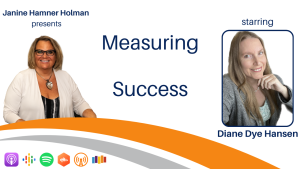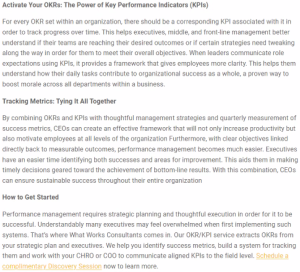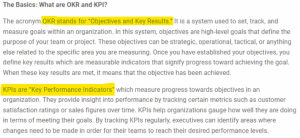
What does success look like in your workplace? Do you have a clear answer to that question, or is it murky? In this episode, Janine Hamner Holman sits down with Diane Dye Hansen, a management consultant and doctoral candidate in the field of organizational change and leadership, to discuss the definition of success in organizations.
GUEST: Diane Dye Hansen | LinkedIn, Instagram, Facebook
HOST: Janine Hamner Holman | [email protected] | LinkedIn, Facebook, Instagram
I recently came across a Lewis Carroll quote where he said, “If you don’t know where you’re going, any road will get you there.” Steve Maraboli tweaked it and stated, “If you don’t know exactly where you’re going, how will you know when you get there?”
If you’re a frequent reader you’ll know that over the last decade, I’ve become obsessed with how our brains work: neurobiology. Something tricky about the last several years, where we’ve been in this sea of uncertainty, is that the absence of certainty can trigger a powerful sense of threat in our brains.
That can greatly diminish our communication abilities and the quality of our decision making. We can also enter that same threat state when we feel our autonomy is threatened. Whether we’re worried about the economy, layoffs, cutbacks, or world events, big and small, certainty and autonomy can feel hard to come by these days.
In the absence of perceived certainty and autonomy, research shows that clarity, which is all about our collective assessment of the current situation and reality, combined with an understanding of options over which we can have some sense of control, can be a soothing balm that helps us come back to ourselves.
Under these challenging circumstances like job insecurity, socio-political uncertainty, and even interpersonal conflicts, we can help alleviate the stress of the unknown and put ourselves on a path to progress by focusing on clarity. That brings us right to our guest for today.
I am so excited to introduce you to Diane Dye Hansen. She is a management consultant and a doctoral candidate in the field of organizational change and leadership. She cares about performance, innovation, and disrupting business-as-usual in order to create performance and innovation. She helps leaders analyze their organizations and make process changes necessary for improving employee experience, engagement, and productivity to increase the bottom line.
Welcome to the show, Diane.
Thank you so much for having me, Janine. It’s amazing to be here.
You’re so welcome. I’m going to start the way I often do, which is, tell me something you have become aware of that we are not paying enough attention to, either consciously or unconsciously. What is the cost of that inattention?
What we’re not paying attention to a lot of the time, and it’s usually the fault of business-as-usual, is, what does success actually look like? What happens in the day-to-day is that we are just so caught up in the autopilot of going from point A to point B. Where I specialize and focus is service delivery because that is the place where point A to point B is a lot shorter.

You are in a service, you have your client or your customer, and you have your service delivery employee. If something is broken metrics-wise, training-wise, or skill-gap-wise here, it visits that front line very quickly. It can in a product sense, but it might take a little bit longer to impact that bottom line.
In a service-type industry, like a restaurant or healthcare setting, it happens quickly. If you don’t know what success looks like and you’re not measuring it, you give yourself a big blind spot immediately because you have not built that plan, that certainty around the vision. Nothing feels more uncertain than not knowing what the vision is.
I was working with a group of managers yesterday and one of the things I talked about is: I had a manager a number of years ago who would say the equivalent of, “Go get me a rock.” I’d respond with, “Okay, how about this one?” They would say, “No, not that one.” This would go on and on.
I kept feeling like I was doing a bad job because I’d try and do whatever it was she was asking for, but I wasn’t getting enough clarity about what success looked like. It was perpetually demoralizing.
How can we help organizations get better at creating that clarity for their teams about what success looks like?
For your example, one of the first steps is to understand the impact of perception. For instance, if you think of a bus, there are all different types of buses, just like your rock. You could be thinking of a school bus while I’m thinking of a tour bus. What’s missing is the gap between leadership perception and frontline perception. It’s about the view from the C-suite, which is very different from what’s on the beat.
You need alignment on that perception. Only then can you align on what success looks like for the metrics. If you’re collecting a metric, you have to know what the metric is, and the vision for the metrics. You also need to know the how.

Sometimes, for someone who is on the beat, that idea of what is even possible perception-wise is totally different than what the C-suite thinks can be done. Bringing that into alignment from the C-suite, to the middle line, to the front line is absolutely essential as a first step. That comes with transparent, honest, open, psychologically safe communication.
I want to get into metrics in a minute. Something we’ve talked about is when we create, as you just used the term psychological safety, which means, “I know that it is not only expected but obligatory for me to tell you the truth. I’m not going to be punished for it.”
There’s going to be no retaliation if I say to you, “Okay, so this is FUBARed out here and I don’t know how to fix it, but you need to know that we’ve got a big problem.” From there, you’re not going to shoot the messenger. If we don’t create those situations, then the decision makers aren’t getting the right information to be making the best possible decisions.
We often will go off down a tangent road not realizing we don’t have the right information. It all starts with clear communication and not only just what kind of bus, but really being very clear to paint the picture of the size of the bus, how many people it fits, where it’s going, and everything about it. It’s about painting that picture with people. After that, do we get to the metrics?
At that point, you communicate the why. Simon Sinek has this beautiful quote, “You are not in charge, you are responsible for the people in your charge.” That means you are also responsible for their performance. Communicating for that, including listening for performance gaps, is how you lead effectively. Also, don’t collect and forget that data.
That’s a mistake I see often. I’ll sit down with a client and we’ll do OKRs and KPIs and we’ll figure out how we’re going to collect it, and how often, and who’s going to collect it. Then assignments go out. From there, we might as well be in school because that’s exactly what happens. The metrics get collected once a quarter or once a year, but there’s no action plan around it. There’s no empathetic change management that exists around the metric. Sometimes I’ll talk to an organization and they’ll say, “Oh, should we be measuring that?”
I’ve talked to companies that don’t have exit interviews, or if they do, it’s a checkbox. I would challenge every leader who is responsible for measuring success to see how many of their metrics are change metrics and how many are checkboxes.
The more checkbox metrics you have, it might look good at the 30,000-foot level, but the level of change and excellence in service delivery that you’re achieving is diminished. You don’t want to be in a spot where you’re saying, “Yes, absolutely, yes, we collected this. Here are our metrics, and, this one, that’s kind of an outlier. Well, we just won’t include that one in the report.”
Or you collected them and didn’t do anything with them. Then we didn’t close the communication loop with our people. We didn’t say, “Here’s what we learned. Here’s what we heard. Here’s what the information told us. Here’s what the data said. Here’s what we did with it. Thank you for your participation in this.”
Part of being responsible for the people in your charge is understanding what barriers they face and removing those barriers. Also, when something is going well enough to go, “This change actually went really well.” Then quickly going on to the next one and the one after that. We take some time, value our progress, and validate the work.
When we value and validate, that improves performance because we feel seen, heard, and safe, and we want to perform because the organization is helping us reach personal goals. Reviewing and celebrating that success is important. You can think of it like building a house, you’re not going to slap a roof on a piece of sand and call it done.
… but I have to crawl under the sand to get in under the roof.
It’s not going to work. You’ve got to pour that foundation, which is: measure what matters. It’s the OKRs and KPIs, but it doesn’t stop there. By stopping there, leaders do their organizations a disservice.
Diane, can you talk briefly about what an OKR and a KPI is?

Absolutely. So OKR is objectives and key results. It’s high level. The objectives can be strategic, operational, or tactical but those objectives are basically, if you think of it like a circus tent, it is the tent pole. Without a very solid objective and key result, you can’t trickle down to actionable KPIs or key performance indicators. Those measure the progress toward those higher 30,000-foot objectives, acting as tent stays.
The tent will stay up when you have all of the anchors tight, with secure KPIs being met. KPIs are more tactical in nature. They are specific. They can be used to gauge how well employees are doing in terms of meeting their goals. The OKRs are the top-level organizational priority. Paired together, it is such an organizational superpower because you are tightly focused on the CEO’s vision.
You are tightly focused on the operational, financial, and people-operations goals. Everything at that 30,000-foot sea level is directly attached to what is happening on the bottom line. The show can go on. If any of those lines go loose, what happens? The elephant leaves the circus.
For a quick test, you can say, “Is this an OKR or a KPI?” You need to ask yourself, who cares? My one OKR would be shareholder return. Who cares about it? CEOs and CFOs care.
How would that translate to the bottom line with the KPI shareholder return? Customer value. But who cares about customer value?
The salespeople care because they have to develop customer value to make the sale. The customer success or customer management teams care because they want to deliver customer satisfaction. Retention matters. All of these KPIs attach to something bigger like shareholder value or shareholder return.
There could be a number of things like that.
“How do we show up in the media as an organization?”
One thing I’ve been looking at is how reviews on Indeed, Glassdoor, and external reviews connect to internal measurements within the employee satisfaction and engagement functions.
For these external things, the risk can be mitigated so they don’t show up. If they are out there, if there are less than three stars, the key is to not go the route of blame. Instead, go the route of curiosity.
Curiosity needs to be forefront for every organizational leader, regardless of their role in the organization. Everyone who is a leader in an organization gets to be curious these days. When we put curiosity first, we have an opportunity to let go of fear, scarcity, blame, and shame, and move into how we can get the process on track.
There’s no blame, no shame, no anything. There’s no weight behind that. It gets to be the object lesson and piece of value that it is, versus being afraid of failure, of looking funny, of any of the above. You can say, “Okay, that’s what happened.” If you figure that out, then you can determine what you can do about it.
I’m thinking of two different things. One is about culture, organizational culture, and how that connects with this. The other is around keeping employees.

This came up in preparation for this interview. I work a lot with organizations on organizational culture, and I’ve never extensively thought, other than with employee engagement surveys, about how to use data in order to design and further culture.
What ideas do you have about the intersection between culture and measuring success and data?
Well first, you have to know what kind of culture you have.
It’s not what kind of culture you want. It’s not about the writing on the wall. When I was fresh-faced in my twenties, one of the organizations I was working for was acquired by another company. We had a town hall and they asked, “Does anyone have any questions?” Everyone was super silent. I raised my hand and asked, “What do your corporate offices look like?”
The HR person delivering this town hall was entirely confused. They responded, “Well, it’s in a warehouse.” I clarified, “What do your walls look like? What do your workspaces look like?” They didn’t understand it at that point, but little 20-year-old fresh-faced Diane was saying, “I want to see if we have organizational alignment here.”
Because, if we are looking at an organization that is very industrial and set in old ways, merging with an organization with brightly colored walls, two managers per office who collaborate, an open pit area, and lunch rooms, we have some differences here employees need to understand.
The idea is to utilize metrics for culture by knowing what the culture is within the organization with an employee engagement satisfaction survey, to find out what’s actually going on in the trenches. We compare that to the cultural vision, an alignment with the mission, vision, and values of the organization.
Then we close those gaps with a gap analytic framework to discover, “Okay, what’s our current state? What’s our ideal state? What do we have to look at: knowledge, motivation, or what’s within the organization, to close these gaps so we’re walking the walk and talking the talk? That way, when we’re recruiting new employees, we’re telling the truth.”
My least favorite thing, and I worked in this kind of organization for a while, is if they’ve got posters up on the wall that say things like “teamwork,” “motivation,” and something about “success,” but that’s not the experience of working there.
Every time I walked into that lunchroom and saw those beautiful posters, I got mad and I felt like a little part of me died every day. By the time I left, a lot of me had died. There was such a disconnect between what they said and how it felt to be there every day.
You cannot throw up a poster and call it culture. It just doesn’t work like that. Mission, vision, and values, unless communicated and measured to the bottom line, aren’t your mission, vision, or values at that point. I’d like to challenge anyone who’s in the executive ranks to look at their organization’s mission, vision, and values, and ask, “Do I measure these to my bottom line within my role and responsibility?”
If you’re at the C-level, ask yourself, “Is this happening?” If you’re at the mid-level, the question is, “Can I make this happen?” If you’re in the trenches doing the work, ask, “What can I do?”
Find your responsibility in making the change happen across the organization. Culture starts with a seed, then it sprouts and spreads.
That’s why psychological safety is so important because you’re not going to take that risk, you’re not going to look at the mission, vision, and values of the organization you’re in and say, “Gosh, I would like to present this thing. I know the company wants me to present like this, but my frontline manager doesn’t support this and I would not be rewarded or respected. In fact, I would probably be punished for this. So instead I’m going to stay quiet.”
That’s why those surveys are so valuable, especially with an objective third party who can assure confidentiality. That’s another factor in collecting metrics: confidentiality and anonymity.
There’s often a strong reaction from employees regarding the anonymity statements on a lot of surveys because they don’t believe it. That trust is not there. The more they don’t believe it, the less psychologically safe your organization is.
The less good data you’re going to get, too. I worked for an organization where I did not feel safe, and where I knew my manager would retaliate against me. Her team was small enough that if I gave bad numbers, I knew she would know it was me. Because of that, I gave good numbers to a manager who was incredibly toxic because I had no other choice. When we put people in that situation, it’s the old saying, “Garbage in, garbage out.”
How do we ensure nobody’s going to get access to the data who can then undermine the validity of the data?
Exactly. You have to close the loop as well. The data has to be valid and it has to be actionable. All this action can be happening in the background. If the frontline doesn’t know, or the people who responded to the survey don’t know that things are happening, you get: “Every year, they ask us what we think, and every year, nothing changes.”
You have to commit to closing that loop. Then you get that trust factor that’s so important. It’s very clear that your organization is listening, and then it does matter to speak up. It can be super safe to be who you are and say anything, but if nothing happens, and with longevity and tenure this problem intensifies, then you’re still going to get the same level of attrition, resentment, or quiet quitting.
I was getting data the other day from over 300 CEOs, many of whom are in manufacturing, and I was both surprised and not surprised that many of their issues are around things like the supply chain we’ve been hearing a lot about.
They were asked, “What are your top two concerns?” Almost everyone had a concern about getting the right talent, keeping the right talent, and keeping people engaged. There are real connections between the work you do and OKRs and KPIs.
This is around what you were talking about, Diane, the way we want to ensure that the work environment is set up so we are keeping our top talent.

Then, when people are looking at the possibility of going to a company, it’s the kind of environment where they’re actually going to want to stay.
How can we use these data tools to help ensure companies are keeping their best employees and creating a great environment? In addition to what you were talking about, what can we do to ensure that when people are recruited, they’re going to want to stay and we’re going to find the right people?
First, be focused on what you want to measure. Organizations can get very survey-happy.
When you do ask, ask with intentionality, make use of the data, and do the work around it. Also, don’t try to change everything at once.
Cognitive overload is real. Empathetic change management is very important because you can go through all of the steps of change management, but the really important piece is how much change you’re implementing. Is it going to run people into the wall?
You could hit every step of Kotter’s method. You could hit every step of ADKAR and academically it would look like you’re doing everything. But if you miss that piece of, “Is this the right amount of change for the environment we’re in?” Then you’re missing the mark.
With that concept of connectivity, how can we connect what we are trying to change, trying to measure everything in, with what’s important right now?
How can we make the main thing the main thing right now?
Then there’s a belonging initiative we can connect with. That way we don’t get to the place of, “They survey us, they make all these changes. There are a million changes going on all at once.”
Yes, we do want to make a lot of change and we want to be innovative and all of that, but we also want to create innovation that sticks. If we try to change too much, it won’t stick.
Understanding that span, if you think of it in terms of, “Here’s our highest level output, our extreme on this end. How do we define the middle, the sweet spot in connection with these initiatives so we don’t create that metric overload?” Metric collection is just the beginning…
… then what are we doing with it?
Exactly. So do something with it.
I love this and I love that this conversation is happening now. Our last episode, with Beth Banks Cohn, was all about change management. Now we’re talking about how we measure change and success, which go hand in hand. I was just talking with an organization that I’ve been working with for around eight months, and we were going to begin a big change initiative. There were about 10 of us sitting around in a conference room last week, and we decided we were not going to do it yet.
There’s been so much change. There have been so many things happening and new programs and new clients coming on board. We need to get our feet back under us again before we start the next thing. I love what you’re pointing to.
Is there anything you were hoping we would get a chance to talk about today that we haven’t touched on yet?
I think we’ve really touched on the high points of it.
Metrics are important to collect, but it’s what you do with them that matters. Don’t collect and forget. Execute empathetic change, review and celebrate the success of the change, and learn from the failure of the change. Don’t be afraid to fail. Keep the organization psychologically safe so it’s not a big deal to fail.
What a perfect note to end on. Thank you so much, Diane. Thank you for your deep understanding of these things, and your curiosity about them. On that note, we are all creatures, whether we are individuals, teams, or organizations, we are all creatures in the process of becoming.
When we get hooked by, “Oh, I didn’t do that perfectly,” whether it’s me, we, or us, we get thrown off and our opportunity is to get curious and learn. Thank you so much for creating more clarity around these concepts and how we can work with them well.
You’re so welcome, and if your readers want to get more curious they’re welcome to subscribe to my free research. We release research every week at bit.ly/wwcfreeresearch.
I just signed up and you’ve got two white papers that people immediately get, one around retirement and one around driving employee retention.
Diane, thank you so much for being with us here today.
Thank you. It was amazing.
Awesome. I am Janine Hamner Holman, and this has been The Cost of Not Paying Attention. Remember, great leaders make great teams. Until next time.
Important Links
About Diane Dye Hansen
Diane Dye Hansen has been at the forefront of transforming companies for the last 20 years. Her multi-industry experience spans SaaS, publishing, entertainment, professional services, government, healthcare, and consumer products. As the Chief Management Consultant of What Works Consultants, Diane utilizes research, internal communication strategy, and process development to reshape companies and position them for reorganization, expansion, growth, succession, and (if desired) sales. She specializes in utilizing challenging situations to create innovation in service-focused companies, enabling them to diagnose and fix internal problems to increase revenue through enhanced processes, communication, and training.
Diane has a Masters in Communication Management from the University of Southern California where she graduated as an inductee of Phi Kappa Phi Honor Society and a Bachelor of Business Administration from Cal State San Bernardino. She has a High Performance Masters from the High Performance Institute, is a Certified Problem and Change Manager, and is a Certified Customer Success Management Consultant. She is currently pursuing her doctorate of education in organizational change and leadership from USC Rossier.






